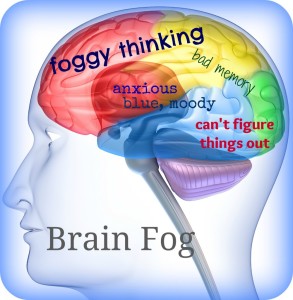Migraine
- Home
- Migraine
Chiropractic treatment for migraines an introduction
Does it help ease or reduce immediately
Yes
Chiropractic Care involves releasing and decompressing nerves by moving, stretching and releasing the spinal nerves and cranial nerves in and around the bone and tissue. Generally most patients have historically been medically examined and treated with medications that don’t stop the migraines, however they also rule out pathology. Chiropractic Care does not involve drugs or surgery, we use X-rays and other exams to analyze how the patient’s spine might impact the patient’s health. Chiropractors use devices such as shoe inserts, braces, straps and other tools. They also advise patients on lifestyle issues such as exercise, nutrition and managing stress. A big European study found people relocating to foreign countries with low or no incidence of migraine normalized too.
 Chiropractic management of migraine
Chiropractic management of migraine
Headache Australia 2021: It is important to discuss treatment options with your healthcare professional. If the medication that you are currently on is ineffective, there may be other treatment options that will be effective.
There are two main groups of migraine medication. Acute medications can be taken when you start to experience a migraine attack. They will help reduce the symptoms associated with migraine, and they range from over-the-counter painkillers to migraine-specific prescriptions. Preventive medications aim to reduce the number of attacks overall, which is more suitable for people with chronic or very debilitating migraines. These are taken on a regular basis, whether that is daily or every few months.
However many medications did not comply with the new rules of high standard double blind control trials, or worse cannot be duplicated. How can painkillers be harmful to your health? Opioids affect the part of the brain responsible for breathing, and one of the big threats opioid painkillers pose is the risk of slowed or restricted breathing. When opioids are taken in high doses, a possible overdose can lead to the slowing or stopping of breathing—and even death.4 Nov 2019 Painkiller Effects | Short Term, Long Term & Side Effects – DrugAbuse.com
Non-medicated treatment options include lifestyle adjustments, complementary therapies such as massage, and nerve stimulation devices like Cefaly. Your doctor can help you decide which treatment options are best for your migraine and lifestyle.
The treatment of migraine patients within chiropractic: analysis of a nationally representative survey of 1869 chiropractors
BMC Complementary and Alternative Medicine volume 17, Article number: 519 (2017)
Abstract
Background
While the clinical role of manual therapies in migraine management is unclear, the use of chiropractors for this condition is considerable. The aim of this study is to evaluate the prevalence and characteristics of chiropractors who frequently manage patients with migraine.
Methods
A national cross-sectional survey of chiropractors collected information on practitioner characteristics, clinical management characteristics and practice settings. A secondary analysis was conducted on 1869 respondents who reported on their migraine caseload to determine the predictors associated with the frequent management of patients with migraine.
Results
A large proportion of chiropractors report having a high migraine caseload (HMC) (n = 990; 53.0%). The strongest factors predicting a chiropractor having a HMC include the frequent treatment of patients with axial neck pain (OR = 2.89; 95%CI: 1.18, 7.07), thoracic pain (referred/radicular) (OR = 2.52; 95%CI: 1.58, 3.21) and non-musculoskeletal disorders (OR = 3.06; 95%CI: 2.13, 4.39).
Conclusions
Several practice-setting and clinical management characteristics are associated with chiropractors managing a HMC. These findings raise key questions about the therapeutic approach to chiropractic migraine management that deserves further examination. There is a need for more primary research to assess the approach to headache and migraine management provided by chiropractors and to understand the prevalence, burden and comorbidities associated with migraine found within chiropractic patient populations. This information is vital in helping to inform safe, effective and coordinated care for migraine sufferers within the wider health system.
Cranial Nerves and Their Function’s
Migraine pain pathways often follow Cranial Nerve referral of pain. These are separate from Spinal Nerve pathways.
Did you know that there are 12 pairs of cranial nerves that perform some highly sophisticated functions? Some of these direct the activities of our muscles, some relay information from the sensory organs to the brain, and some are linked to internal organs such as the heart and lungs. Injuries to the neck and head can affect these nerves, leading to many ailments besides just headaches and neck pain! Copied 13 March 2017 www.choosenatural.com
Each of the cranial nerves is referred to by Roman Numerals:
- I Olfactory – linked to the sense of smell
- IIOptic – linked to vision
- III Oculomotor – connected to eye movement and dilating the pupils
- IV Trochlear – also connected to eye movement, particularly eyelids and eyeball
- V Trigeminal – linked to facial sensation and chewing
- VI Abducens – linked to side-to-side eye movement
- VII Facial – controls facial movements, taste and sensory information from the ear
- VIII Vestibulocochlear – relates to hearing and sense of balance
- IX Glossopharyngeal – controls muscles for swallowing and our sensation of taste
- X Vagus – motor function to the larynx, modulates heart rate and digestive organs
- XI Spinal Accessory – controls the muscles responsible for head movement
- XII Hypoglossal – controls the muscles of the tongue
Of course, any type of compression, concussion, bump, shock, trauma, injury or accident to a cranial nerve may affect the functioning of what that specific nerve controls. Just as chiropractors can test the functioning of nerves that exit along your spine, there are tests which can reveal whether each cranial nerve is functioning properly. Many cranial nerves come out of the brain near the brain step, the top back of the neck.
